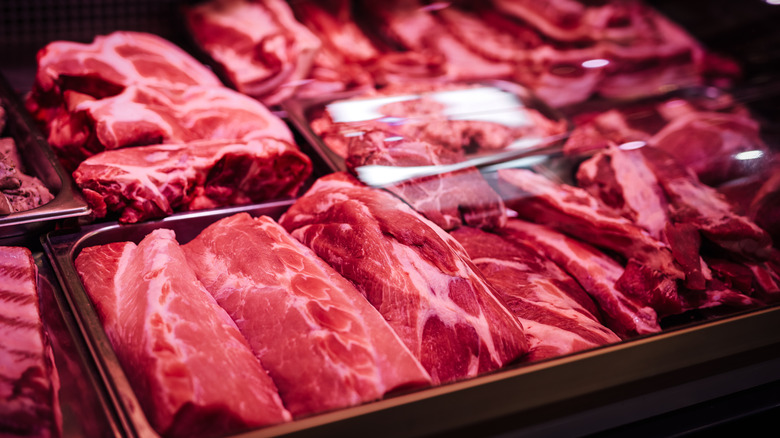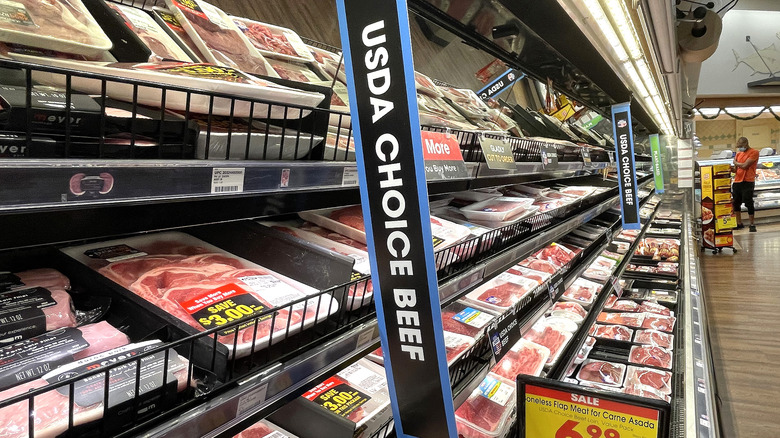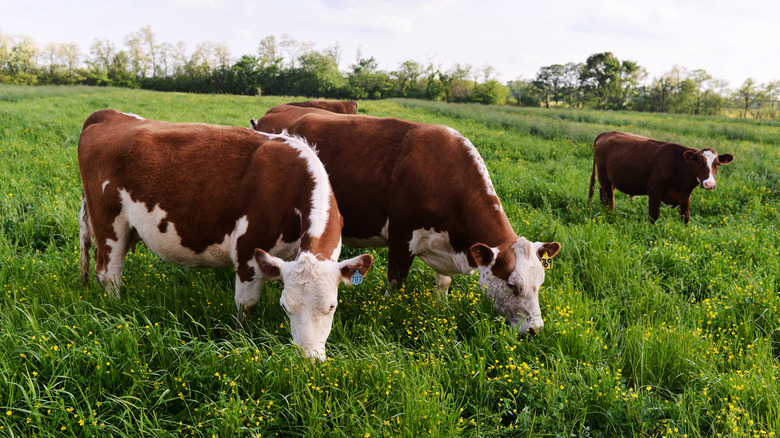Pat LaFrieda's Tip For Finding Quality Meat At The Supermarket - Exclusive
It's no secret that Americans have become more concerned about the quality of their food. Recent decades have seen the rise of organic produce, the elimination of hormones and antibiotics, and increasing concern about the ethical treatment of animals. Though this is a good thing both for our health and the planet, it can lead to some overwhelming decisions at the grocery store, where abundance is on display and year-round options for just about everything are virtually endless.
Meat is no exception. The supermarket boasts a huge variety of cuts, all bearing a slew of labels denoting fat content, feeding and farming conditions, and all kinds of certifications. So how does a shopper figure out what's best for them when they want to whip up a steak dinner? Some chefs and foodies claim that you should stay away from the supermarket meat aisle in favor of your local butcher shop — but it's not the only way to get quality meat, according to one of the most revered meat suppliers in America, Pat LaFrieda.
"I wouldn't say you have to get it from the butcher. Buying meat from a store is just as good," the fourth-generation butcher behind Pat LaFrieda Meat Purveyors told Tasting Table. However, as he explained in our exclusive interview, there is a key indicator to look for to know that you're buying certified high-quality beef and that you can trust the claims being made on the package.
Look for the USDA label
While there's a lot of information on the meat labels you'll see at the grocery store, according to Pat LaFrieda, there's one main important designation you should be paying attention to. "I would immediately look for a USDA establishment number," he told Tasting Table. It features a circle with the letters "EST" inside, along with a five- or six-digit number.
LaFrieda says this is the biggest indicator that your meat is safe and comes from a "facility [that] is run under USDA oversight" — meaning inspectors are frequently at the location, ensuring that all aspects of production are safe and adhere to federal regulations. And while you might assume that all meat sold at the grocery store must be USDA certified, that's actually not the case. LaFrieda noted that butcher shops and wholesale meat suppliers don't necessarily have to be certified if they aren't selling to restaurants.
As LaFrieda explained, buying USDA-certified meat is the easiest way to ensure you're getting restaurant-quality product, and more importantly, that you aren't going to eat something that will potentially make you sick. "It's rare to hear of foodborne illness from meat from a restaurant. That's because any butcher who sells meat to restaurants has to be USDA inspected."
Grass-fed beef isn't always best, according to LaFrieda
Besides ensuring your meat is safe to eat, a USDA label is also the only way you can be sure that any other claims being made about the meat — grass-fed, organic, hormone-free, etc. — are actually true. "If the claim is on there and it's from a USDA facility, USDA has gone to great lengths to verify that," Pat LaFrieda said.
However, he recommends being wary of one label in particular. While grass-fed beef is having a major moment among health- and sustainability-minded shoppers, LaFrieda claims that this kind of beef does not actually taste better, and "it's not better for the environment ... It takes two to three times longer for that animal to get to the right size to harvest," using more resources and leaving a bigger carbon footprint. Additionally, he explained, "All beef is fed grass — it's what it is finished on. Finishing [cows] on corn, especially when the corn is derived from [a] neighbor ... that's local, that's sustainable, and the carbon footprint that's recorded in those circumstances is low."
Click here to learn more about Pat LaFrieda Meat Purveyors and their wholesale options for quality cuts of meat.


